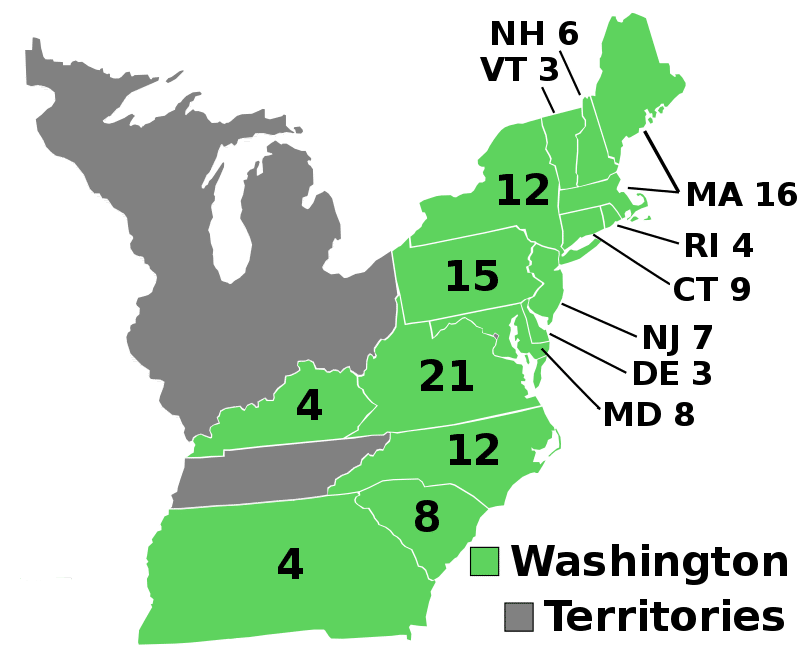The Presidential Election of 1792 was the second election in American History, and once again, George Washington was elected unanimously.
Although Washington did not like party politics and warned against them, he is considered a Federalist due to his political leanings.
His second term was much more difficult than his first as his mystique had worn off, and the influential Alexander Hamilton had begun to make political enemies out of Thomas Jefferson and James Madison.
Presidential Election of 1792: Platforms

While there were no official parties as we know today, there were competing factions that began to form.
- Federalists: Alexander Hamilton became the leader of the Federalists and had much influence over George Washington. He and his followers became known as Federalists.
- Democratic-Republicans: Thomas Jefferson and James Madison spent many months prior to the election of 1792 recruiting others to their political ideas. They became known as Democratic-Republicans.
Although the parties had different visions of where the country should go, both parties nominated George Washington as their presidential nominee.
In the late 18th century, nominations were not based on political ideology but on reputation, and George Washington had the best reputation in the country.
Presidential Election of 1792: Results

The Electoral College chose Washington unanimously. John Adams was again elected vice-president as the runner-up, this time getting the vote of a majority of electors.
George Clinton won the votes of only Georgia, North Carolina, Virginia, his native New York, and a single elector in Pennsylvania.
Thomas Jefferson won the votes of Kentucky, newly separated from Jefferson's home state of Virginia.
A single South Carolina elector voted for Aaron Burr. All five of these candidates would eventually win the election to the offices of president or vice president.
Signs of the division were beginning to show. The Democratic-Republicans began to pick up seats in Congress and, at the local level, started to show some signs of competing with Alexander Hamilton and the Federalists.
Related Pages
- Wikipedia - Election of 1792
- Tariff of 1789 - First Division of the Parties
- The History Junkie's Guide to the American Revolution
- The History Junkie's Timeline of the Revolutionary War
- The History Junkie's Guide to President George Washington
- The History Junkie's Facts About George Washington
- The History Junkie's Guide to U.S. Presidents
